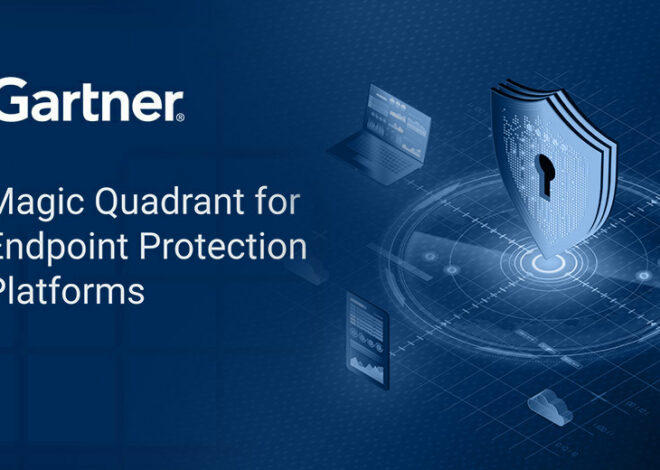
Forrester Wave Endpoint Detection and Response 2022 -2023
Are you looking for the best endpoint detection and response solution? Look no further than Forrester Wave! This industry-leading report provides an in-depth analysis of the top EDR solutions on the market. With its comprehensive evaluations, expert insights, and unbiased assessments, Forrester Wave is your ultimate guide to choosing the right EDR tool for your organization’s unique needs. In this blog post, we’ll give you a sneak peek into what makes Forrester Wave Endpoint Detection and Response a must-read resource for IT security professionals. So buckle up and get ready to discover how Forrester Wave can help you make informed decisions about protecting your endpoints from cyber threats!
Table of Contents
What is an EDR?
The Forrester WaveTM: Endpoint Detection and Response, Q3 2019
How to choose an EDR product
The future of EDR
Conclusion
What is an EDR?
Endpoint detection and response (EDR) is a type of security software that helps protect computer networks and systems from malicious activity. EDR tools are designed to detect and respond to network attacks in real time, so that businesses can quickly identify and contain any threats.
EDR solutions typically offer a combination of features such as intrusion detection, incident response, forensics, and behavioral analytics. These features work together to give security teams the visibility and context they need to quickly investigate and resolve threats.
Behavioral analytics is a key component of EDR, as it can help organizations identify unusual or suspicious activity on their network. By analyzing historical data and user behavior, EDR tools can flag potential threats and help security teams investigate them more quickly.
The Forrester WaveTM: Endpoint Detection and Response, Q3 2019
The Forrester WaveTM: Endpoint Detection and Response, Q3 2019 report is the first evaluation of the endpoint detection and response market. This report provides an overview of the market, its key players, and its future direction. The Forrester WaveTM: Endpoint Detection and Response, Q3 2019 report is intended for security and risk professionals who are responsible for endpoint security in their organizations.
How to choose an EDR product
There are a few key things to consider when choosing an EDR product:
1. Ease of Use: You want a product that is easy to use and set up so that you can start protecting your endpoint devices quickly and efficiently.
2. Cost: Make sure to compare the cost of different products before making a final decision – some may be more expensive than others but offer more comprehensive protection.
3. Protection: Ensure that the product you choose offers comprehensive protection against malware, viruses, and other threats so that your endpoint devices are always safe.
The future of EDR
As enterprises strive to keep pace with the rapidly evolving threat landscape, they are turning to endpoint detection and response (EDR) solutions to help them detect, investigate, and respond to sophisticated attacks. The Forrester Wave™: Endpoint Detection And Response Solutions, Q3 2018 report evaluated the 10 most significant EDR vendors on 33 criteria.
In this blog post, we’ll take a look at the future of EDR and what trends are shaping the market.
The first trend is the shift from reactive to proactive EDR. In the past, EDR solutions were focused on providing data for after-the-fact analysis and forensic investigation. However, as threats have become more sophisticated and difficult to detect, enterprises are looking for EDR solutions that can proactively identify threats and provide recommendations for mitigation or remediation.
This shift is being driven by advances in machine learning and artificial intelligence, which are enabling EDR solutions to detect patterns of behavior that indicate an attack is underway. Machine learning is also being used to automatically tune EDR systems so they can more effectively identify new and emerging threats.
Another trend shaping the future of EDR is the move from on-premises to cloud-based deployments. As enterprises adopt more cloud-based applications and services, they are looking for EDR solutions that can be deployed in the cloud alongside these other workloads. Cloud-based EDR offers several advantages over on-premises deployments, including lower costs, easier scalability, and faster response times.
The future of EDR is also being shaped by the rise of managed security service providers (MSSPs). MSSPs specialize in providing managed security services such as threat monitoring and incident response. These services are becoming increasingly popular among enterprises looking to outsource their security operations, allowing them to focus on core business activities while having the assurance that their security needs are being met by an experienced provider.
Finally, the introduction of new regulations, such as the General Data Protection Regulation (GDPR), is driving organizations to look for more robust EDR solutions that can help them comply with these regulations. Organizations need solutions that can provide visibility into user activity, detect data breaches, and ensure data privacy.
Overall, the future of EDR looks bright and is likely to become even more important as organizations look for ways to protect themselves from sophisticated attacks and compliance requirements.
Conclusion
We have seen how the Forrester Wave EDR solutions stack up against one another and what they can offer in terms of protection and response to threats. The newest wave, which includes industry leaders Carbon Black, CrowdStrike, McAfee, Symantec and Tanium has made it easier for organizations to choose the right solution for them based on their particular needs. From comprehensive insights into endpoint security posture to rapid incident response capabilities that help reduce risk exposure, each of these vendors provides a unique set of tools that organizations can use to protect themselves from cyber attackers.


